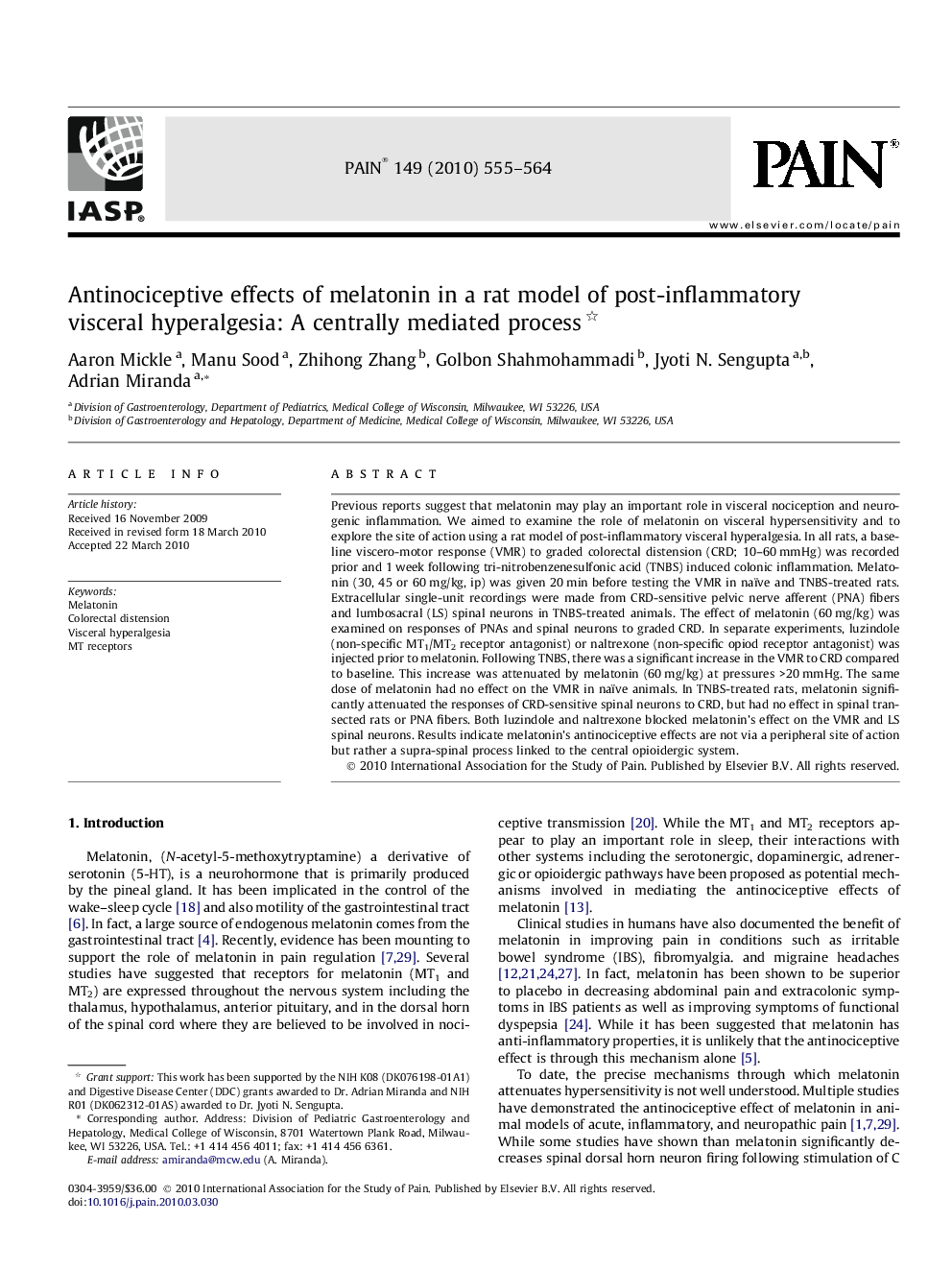| کد مقاله | کد نشریه | سال انتشار | مقاله انگلیسی | نسخه تمام متن |
|---|---|---|---|---|
| 914357 | 918394 | 2010 | 10 صفحه PDF | دانلود رایگان |
عنوان انگلیسی مقاله ISI
Antinociceptive effects of melatonin in a rat model of post-inflammatory visceral hyperalgesia: A centrally mediated process
دانلود مقاله + سفارش ترجمه
دانلود مقاله ISI انگلیسی
رایگان برای ایرانیان
کلمات کلیدی
موضوعات مرتبط
علوم زیستی و بیوفناوری
علم عصب شناسی
علوم اعصاب سلولی و مولکولی
پیش نمایش صفحه اول مقاله

چکیده انگلیسی
Previous reports suggest that melatonin may play an important role in visceral nociception and neurogenic inflammation. We aimed to examine the role of melatonin on visceral hypersensitivity and to explore the site of action using a rat model of post-inflammatory visceral hyperalgesia. In all rats, a baseline viscero-motor response (VMR) to graded colorectal distension (CRD; 10-60Â mmHg) was recorded prior and 1Â week following tri-nitrobenzenesulfonic acid (TNBS) induced colonic inflammation. Melatonin (30, 45 or 60Â mg/kg, ip) was given 20Â min before testing the VMR in naïve and TNBS-treated rats. Extracellular single-unit recordings were made from CRD-sensitive pelvic nerve afferent (PNA) fibers and lumbosacral (LS) spinal neurons in TNBS-treated animals. The effect of melatonin (60Â mg/kg) was examined on responses of PNAs and spinal neurons to graded CRD. In separate experiments, luzindole (non-specific MT1/MT2 receptor antagonist) or naltrexone (non-specific opiod receptor antagonist) was injected prior to melatonin. Following TNBS, there was a significant increase in the VMR to CRD compared to baseline. This increase was attenuated by melatonin (60Â mg/kg) at pressures >20Â mmHg. The same dose of melatonin had no effect on the VMR in naïve animals. In TNBS-treated rats, melatonin significantly attenuated the responses of CRD-sensitive spinal neurons to CRD, but had no effect in spinal transected rats or PNA fibers. Both luzindole and naltrexone blocked melatonin's effect on the VMR and LS spinal neurons. Results indicate melatonin's antinociceptive effects are not via a peripheral site of action but rather a supra-spinal process linked to the central opioidergic system.
ناشر
Database: Elsevier - ScienceDirect (ساینس دایرکت)
Journal: PAIN - Volume 149, Issue 3, June 2010, Pages 555-564
Journal: PAIN - Volume 149, Issue 3, June 2010, Pages 555-564
نویسندگان
Aaron Mickle, Manu Sood, Zhihong Zhang, Golbon Shahmohammadi, Jyoti N. Sengupta, Adrian Miranda,